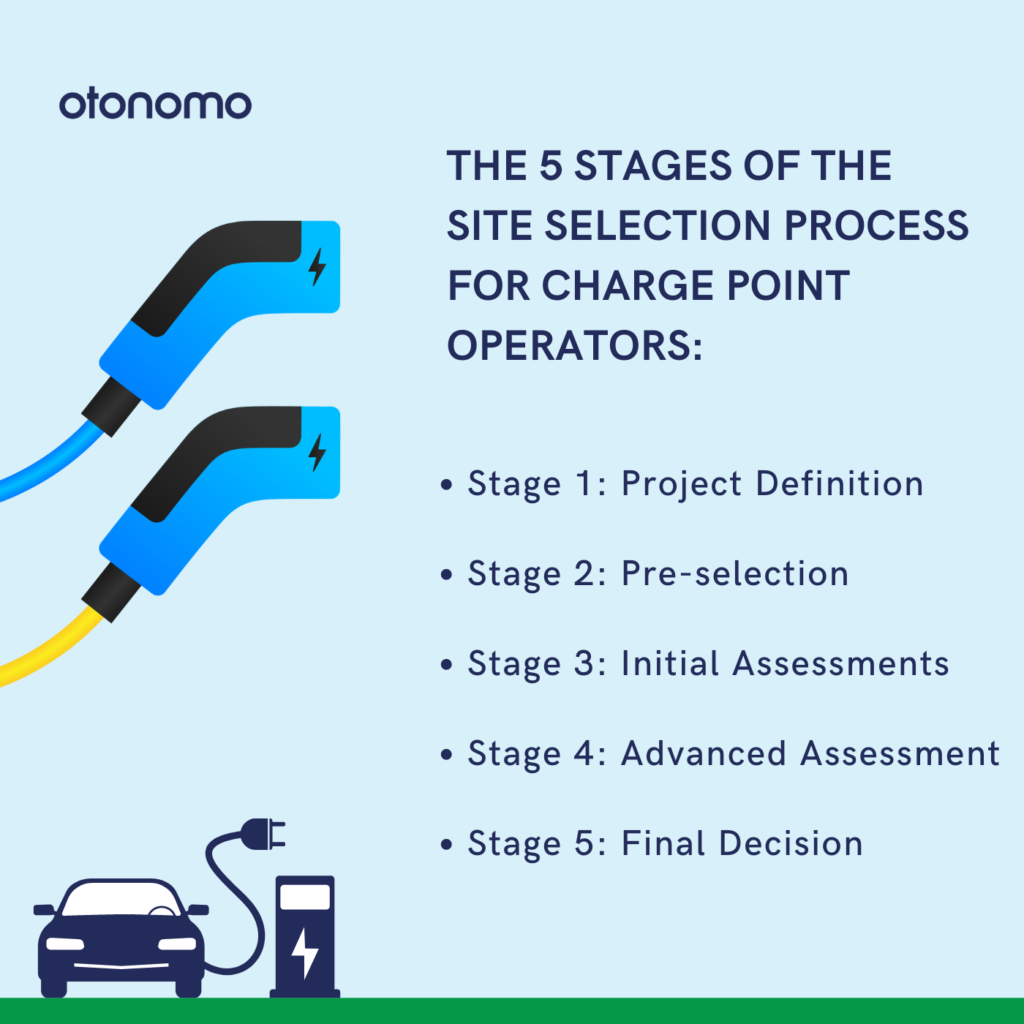
The need for publicly accessible charge points (CPs) is growing quickly – fueled by the growing adoption of EVs on the one hand, and a push from governments that understand the need for creating this infrastructure on the other.
Tasked with building these charging stations are private sector companies – some old energy giants, some new players eager to exploit this new niche. They all face the same challenge – where to place a charging station and what mix of charger type to deploy in each?
Building a charging station, especially one equipped for fast DC charging is a hefty investment, and a decision that should not be entered into lightly. Here are the five stages involved in site selection for EV charge points operators (CPO).
Stage 1: Project Definition
First and foremost, CPOs need to define each project and define its objectives. These include business objectives, but also what is the target geo for the station, the timeline for going into operation and for reaching ROI, and other parameters. Projects can range in size from a single station to deploying 2000 stations all over Paris, but they all require setting business objective, scope, timelines, priorities, site profiles and more.
Stage 2: Pre-selection
During this phase CPOs create a long list of potential sites that meet the project definitions. This is an iterative process to identify initial location options and then evaluating them. Site discovery requires preliminary site analysis to make sure each location meets the minimum requirements of the project, as well as some high-level sanity-check and demand rank predictions in order to eliminate locations that are non-starters.
Stage 3: Initial Assessments
An initial assessment is required to move from the long list of candidate sites to a shortlist of potential charging station locations. CPOs use different assessment tools at this stage, including benchmarking and initial sites visits to get a better understanding of each location and to check its feasibility. Potential sites are analyzed and compared against each other across a variety of factors, including legal constraints, costs analysis, projected demand, potential revenue and more, and the result is a prioritized shortlist of locations that show potential.
Stage 4: Advanced Assessment
The goal of this stage is to create a list of finalists that have risen to the top after an in-depth analysis of site locations. The projected number of visitors and demand for various charger types, ROI and business analysis across different scenarios are all taken into consideration. As well as new tools like in-depth simulations and risk assessment. This detailed due diligence of each site also takes into account technical, legal and planning considerations. As the plans for deployment move forwards, and before a commitment is made this is also a suitable time to meet local authorities and stakeholders, to preempt any resistance and maximize the opportunity.
Stage 5: Final Decision
Finally, it is time for an internal review of the results and for the selection of actual deployment sites. Presenting the proposed sites also involves negotiating with state and local authorities and when all issues are resolved, a final decision can be made, and work on constructing the charging station begin.

As is to be expected, site selection for CPOs is a complex process, involving many stakeholders. For such a process to succeed, guesswork needs to be minimized and as many of the decisions made need to be backed by data and data science.
Want to learn more about Otonomo’s EV Intelligence tools and how they can help you make the right decisions when it comes to charging stations deployment? Just click here and one of our industry experts will reach out soon.












More Stories
Auto Repair Services: Keeping Your Vehicle Road-Ready
Unleashing Creativity with Vidnoz: The Best Free AI Video Generator in 2025
The Connection Between Air Drying and Energy Efficiency in Industrial Settings